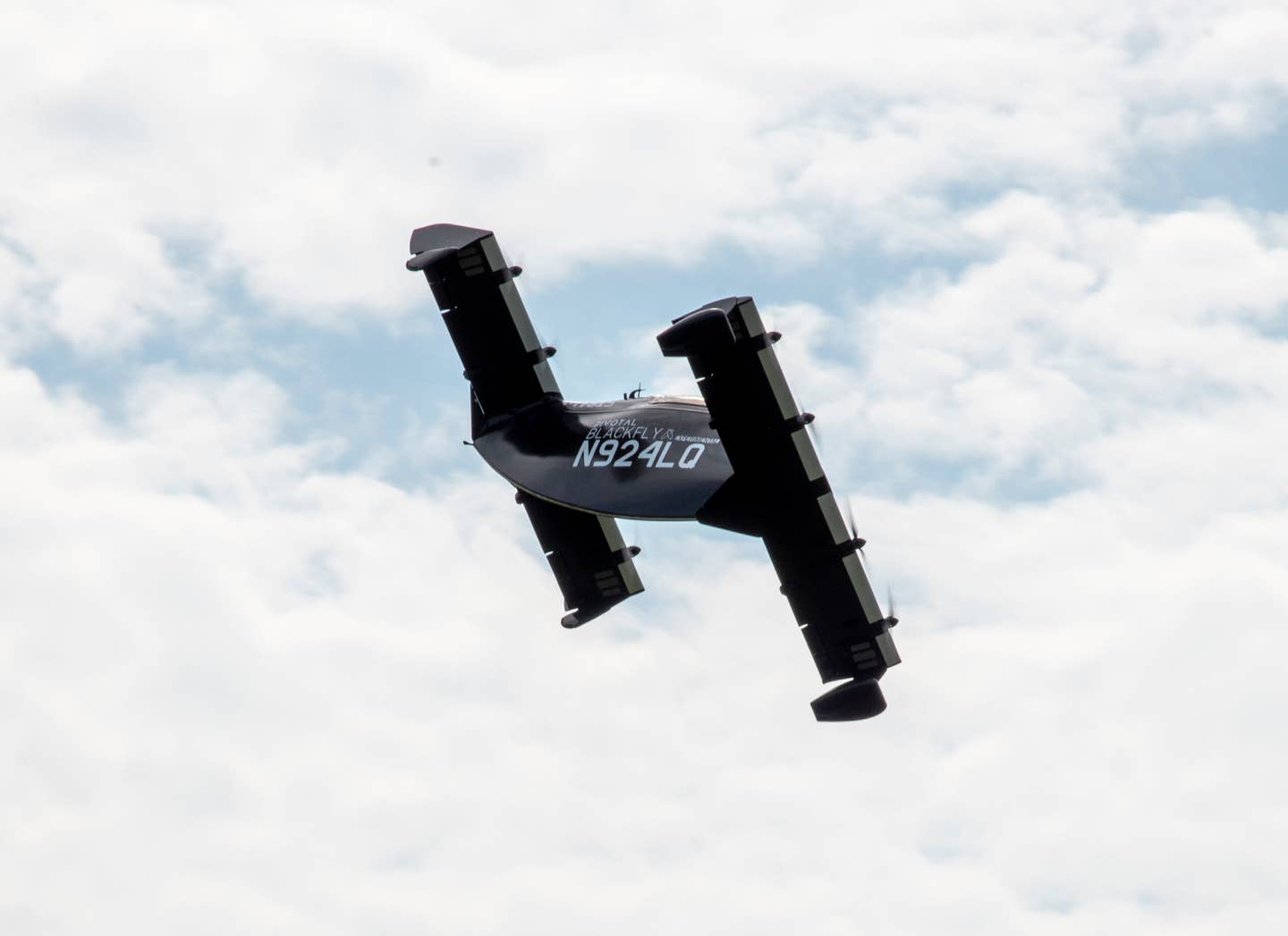Report: U.S. Air Force Should Scale Back Investment in eVTOL Tech
Researchers with the Rand Corporation find that the Air Force’s Agility Prime program is not delivering results for itself or its partners.

Pivotal’s BlackFly eVTOL is among designs being evaluated by the Air Force’s Agility Prime program for military applications. [Courtesy: U.S. Air Force/Matthew Clouse]
The U.S. Air Force is blowing its money on electric vertical takeoff and landing (eVTOL) aircraft, according to a report released last month.
Manufacturers of novel eVTOL aircraft—designed to take off and land vertically like a helicopter but cruise on fixed wings like an airplane—have raised billions of dollars in venture capital. The FAA’s Innovate28 plan even predicts they will be a regular occurrence in U.S. skies by the time the 2028 Los Angeles Olympic Games arrive.
The industry is also backed by the Air Force via the Air Force Research Laboratory’s (AFRL) Agility Prime program, which it founded in 2020 to speed the development of vertical lift technology.
But according to research from Rand Corporation’s Project Air Force, which analyzes issues facing the department, the military may not be getting bang for its buck. Of note, the study was completed in July 2022 and has not since been revised.
“While eVTOL aircraft could likely benefit select USAF missions, eVTOL aircraft are unlikely to be transformational to the USAF,” researchers concluded. “Furthermore, injecting capital into eVTOL firms is not likely to have Agility Prime's desired effect of shaping the domestic eVTOL industry.”
eVTOL is a new technology, but some designs are already flying. The EH216-S manufactured by China’s EHang, for example, last year earned the world's first type certification for an eVTOL air taxi and has since completed a handful of commercial flights with real passengers. Pivotal, meanwhile, has already delivered its BlackFly personal eVTOL to private owners nationwide.
Many more such designs are under development to enable aerial rideshare services akin to Uber or Lyft, tourism and sightseeing, and regional transport.
The Air Force through Agility Prime has taken an interest in these technologies.
This year, it conducted the first simulated casualty evacuation and real-time deployments with an electric aircraft, Beta Technologies’ Alia. It is also testing eVTOL air taxis such as Archer Aviation's Midnight and Joby Aviation’s S4 and personal eVTOL aircraft such as the BlackFly and Jump Aero’s Pulse, as well as non-VTOL electric models such as Electra’s EL-2 Goldfinch and Pipistrel’s Velis Electro. Autonomous systems from Reliable Robotics and Xwing (now a subsidiary of Joby) have further been evaluated through the Autonomy Prime division.
The AFRL commissioned research to gauge how much the Air Force benefits from Agility Prime—as well as how much the program actually helps its commercial partners. Researchers reviewed literature and case studies, discussed with experts, and modeled eVTOL operations, batteries, and more.
“Prime routinely assesses our portfolio and investment strategy to ensure we invest in emergent dual-use technology that can positively impact, and align with the priorities of the U.S. Air Force and broader Department of Defense,” Jacob Wilson, acting branch chief of Agility Prime, told FLYING.
Researchers found that for eVTOL specifically to be commercially viable, they will need to have sufficient charging infrastructure, pilot training, public trust, and, of course, safety. Further, improvements to systems such as lithium-ion batteries could increase their range and payload, opening up more use cases. But the technology in its current form can support some USAF missions.
For example, airmen could perform airlifts when Lockheed C-130 Hercules transport aircraft are unavailable or move forces between facilities in place of cars. The technology’s runway and jet fuel independence are big draws.
“However, eVTOLs are unlikely to be transformational today, and no major command appears ready to sponsor an eVTOL capability today,” researchers said.
Rand predicts the Air Force will make up only a "fraction of a percent” of the demand in the future eVTOL market. The department also “lacks sufficient mechanisms,” it said, to influence commercial firms to produce aircraft suitable for military use. Further, security vulnerabilities may arise due to certain countries dominating the production of components like semiconductors.
Researchers recommended that Agility Prime scale back the program to a "few of the most-capable eVTOL aircraft” and smaller demonstrations. It should continue working with commercial partners, they said—but crucially, those relationships should not be tied to funding.
In addition, researchers urged Agility Prime to support government agencies working toward key regulations around FAA eVTOL certification, air traffic control, and pilot requirements, the latter being a particularly contentious issue for the industry.
“Agility Prime has focused on experimentation, demonstration, and military exercise opportunities with the technologies in our portfolio, as well as user feedback, to promote dual use eVTOL development[…]to leverage commercial technology for military applications,” Wilson said in response to the report’s suggestions. “Additionally, the program has been continuously engaged in nonmonetary or ‘in-kind’ collaboration and knowledge sharing opportunities.”
Agility Prime may be forced to accept at least some of Rand’s recommendations due to a constrained budget environment.
The Air Force’s fiscal year 2025 budget request does not keep up with inflation. And AFWERX, which houses Agility Prime, is only projected to receive about $20 million of it—a substantial decline from last year’s request of $83.3 million. As a result, less funding to commercial partners may be inevitable.
Backers such as Stellantis and Toyota, meanwhile, continue to pour money into the industry.
Like this story? We think you'll also like the Future of FLYING newsletter sent every Thursday afternoon. Sign up now.

Sign-up for newsletters & special offers!
Get the latest FLYING stories & special offers delivered directly to your inbox






